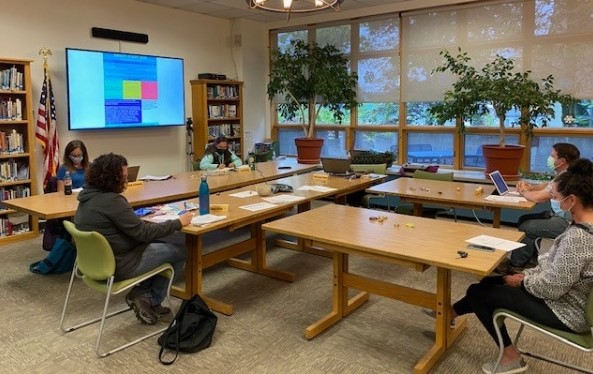
Petersburg students were able to complete assessment tests this fall despite not being able to last spring. Results show growth among students along with some areas for improvements. KFSK’s Angela Denning reports:
Students K-9th grade took the MAPs assessment, which follows a student’s growth over the years. It identifies students that might need help in certain areas. It’s the same test that students all over the country take.
The tests are adaptive and adjust as the students answer the questions.
The youngest students–K-2nd grade–took a new MAPs assessment for fluency while the older students took the usual growth assessment.
Superintedent Erica Kludt-Painter says the fluency assessment looks at things like foundational reading skills or what the kids need to become good readers.
“The reason we moved to this was it’s more indicative of these foundational skills but also the regular MAPs growth test that we use with the older kids is not as appropriate for a five-year-old and it was too long. It was not giving us good data.”
The results of the new assessment are still being studied. Elementary School Principal Heather Conn, said they are still learning how to “read” the results and the teachers will get training on that specifically in January.
Students in grades three through nine took the MAP growth test. It compares students with their peers in the district and with millions of kids throughout the country.
Petersburg’s grades three, four and five showed growth in math and in reading.
Bridget Wittstock is the district’s assessment coordinator.
“We are in the ballpark, we are actually hitting homeruns in some of these,” said Wittstock. “I’m super proud of our kids. They really take it seriously.”
In middle school, scores in reading were high but the math scores were not compared to national averages.
“The math is also extremely challenging,” Wittstock said. “I think that it’s something we know and it’s something we’re working on.”
Secondary Principal Rick Dormer says the math test for 6th graders is the same one the high school takes so the scores are not unexpected. He says it adapts to each student taking the test but it’s also a higher level of test.
Overall, there was growth shown among middle school students but it was in smaller increments than at the elementary school. Kludt-Painter says it’s typical for some 6th and 7th graders to see less growth.
“Large spurts of growth–this is not necessarily the time when that happens,” Kludt-Painter said. “We want to keep the needle moving though so that’s what’s important. Observed growth in the 8th graders are kind of coming back out of that again.”
9th graders scored high on math compared to national scores.
Older high school students took the ACT this fall instead of the spring because of COVID. Wittstock says that scores went down a bit but it wasn’t unexpected.
“In consideration of all that’s happened in the last nine months due to the pandemic and then switching also to virtual learning in the spring, our scores there are really exceptional,” said Wittstock.
Besides the national MAPs tests, students also take a statewide test called PEAKS every year. It’s usually given in the spring but wasn’t this year because of COVID. Kludt-Painter says they don’t know what the state assessment will look like this coming spring.
“We don’t know because they don’t have a plan for how to have security and all those things if there’s so many kids at home so they’re trying to figure out how that can be equitable,” Kludt-Painter said.
Wittstock says the district was lucky that they were able to test to the students at all this fall.
“We are one of the few schools in the state that is actually doing the assessments in the school and some schools are trying to do assessments with kids on line but it’s very, very difficult remotely,” Wittstock said.
Kludt-Painter says there is talk at the state level about using a growth assessment like MAPs to compare students in the state instead of the PEAKs because it gives a more comprehensive look at students growth. She says the PEAKs assessment is just a snap shot of one day in a year.
“It’s very difficult to use it for instruction,” Kludt-Painter said. “It doesn’t really break things down to skills. You don’t do it multiple times through the years. It’s one day. So, they are looking at the MAP assessment potentially, at the state level, to be used, or something like it, rather than having that one day, one shot.”
In any case, Petersburg students will be taking the MAPs assessment tests again in February.










